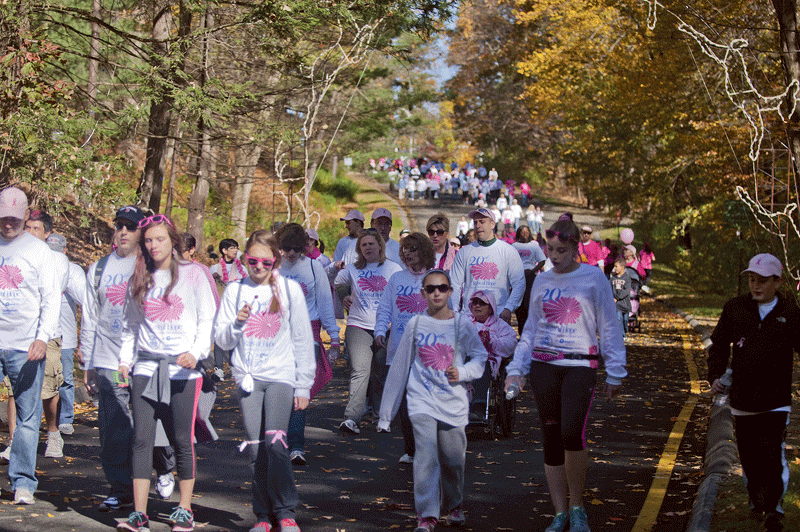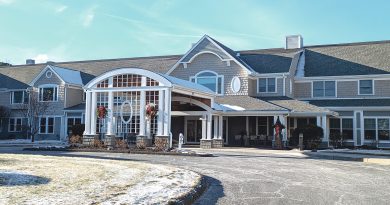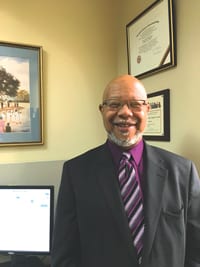One Step at a Time – Rays of Hope Marks 25 Years of Inspiration, Support
Lucy Giuggio Carvalho is a tough person to say no to, as Kathy Tobin found out one afternoon 25 years ago.
“I was a health reporter for WGGB, and I was in the lobby of Baystate Medical Center to do a story,” Tobin told HCN. “And this little petite thing comes walking across the lobby, points at me, and says, ‘I had a dream about you, and you’re going to help me.’ And that’s how I met Lucy.”
Carvalho — then a nurse at Baystate — had been diagnosed with breast cancer some time earlier, and, inspired by an AIDS fund-raising walk she had recently participated in, had a vision to bring something like that to Western Mass. to raise money and awareness around the cause of breast-cancer research and treatment.
A quarter-century later, it’s safe to say that Carvalho’s creation — known as the Rays of Hope Walk & Run Toward the Cure of Breast Cancer — has done just that, and a whole lot more.
As it turned out, Tobin did help her; WGGB became the media sponsor of the first Rays of Hope walk in 1994, and Tobin spearheaded a half-hour documentary special to bring attention to the cause.
“She had this overwhelming desire, not just to do this walk, but to change the way we treat breast cancer,” said Tobin, who has come full circle since then, now serving as director of Annual Giving and Events for Baystate Health, which has long overseen the Rays of Hope organization.
The first Rays of Hope event attracted some 500 walkers and raised $50,000. Today, it has raised more than $14.2 million and attracts about 24,000 walkers and runners each October. This year’s annual fundraiser, slated for Oct. 21, will once again step off from Temple Beth El on Dickinson Street in Springfield and wind through and around Forest Park.
As usual, all money raised remains local, administered by the Baystate Health Foundation to assist patients and their families affected by breast cancer. Funds support research, treatment, breast-health programs, outreach and education, and the purchase of state-of-the art equipment, as well as providing grants to various community programs throughout Western Mass.
“Sometimes I can’t believe all that’s been accomplished,” Carvalho said. “I never would have believed we could raise the amount of money we raised; $14.2 million over the last 25 years is a lot of money, and we can do a lot of things with it — and we have. I’m really proud of Rays of Hope and all we’ve accomplished.”
It wouldn’t have happened, she added, without the continuing, loyal support from the community. “We’ve mostly accomplished what we have through individual walkers and local organizations that have supported Rays of Hope from the beginning. Most of the agencies that got involved in the early years are still involved, as well as the walkers; they come back year after year.”
Carvalho said she created Rays of Hope with a very specific vision.
“I wanted to help people that were going through breast-cancer treatment, to help them navigate the healthcare system,” she explained. “I’d found it difficult, and it was my motivation to make it easier for other people, seeing that I had such a hard time. And I wanted the money to stay local, too. That was really important for me.”
Beyond the critical funding, however, she has long recognized the importance of Rays of Hope as a bonding agent for individuals facing one of life’s most daunting challenges, and the people who love them.
“I think the event is very unique in that, when you’re there, it feels like there’s a big hug all around you, and that people really care about you. It’s just uplifting to be involved, and it’s something to look forward to, something that has become a tradition.”
Tobin also compared the event to a massive hug — one with a great deal of feeling behind it. “We have such a support system in place. It’s like a sorority — but I shouldn’t say sorority, because men are diagnosed, too. It’s just a network of people who care.”
Changing Times
Dr. Grace Makari-Judson has witnessed the evolution of Rays of Hope from a clinical standpoint; she was appointed medical director of Baystate’s breast program at the same time Carvalho was organizing her first walk.
“Lucy’s initial mission for Rays of Hope was not only helping breast-cancer research, but trying to provide coordinated care … a holistic approach,” Makari-Judson said — in other words, to make the journey easier for others than it was for her.
“Thinking back, it’s amazing how much we’ve been able to do with addressing those goals,” Makari-Judson went on. “Twenty-five years ago, women were having mammograms in the hospital, sharing the same waiting room with people who needed X-rays or had pneumonia. Biopsies were done in the operating room, and women got unnecessary scars.
“Today,” she went on, “we have a dedicated breast center where women go for mammograms and other breast imaging. We have needle core biopsy, which is done at the breast center and is a less invasive approach, so women go home with a Band-Aid instead of a scar. That’s the minimally invasive approach started in the mid-’90s and has since become the standard of care. It’s the whole philosophy of less is more.”
Other examples are sentinel node biopsy, introduced at Baystate in 1996, and radiactive seed localization, started in 2010. Both are minimally invasive procedures that Baystate pioneered in the region that have since become national standards of care, Makari-Judson said — and both benefited from Rays of Hope funding.
Meanwhile, Carvalho’s vision of more coordinated care has become reality as well, the doctor said.
“Twenty-five years ago, physicians were seeing patients all in a row — the surgeon, then the medical oncologist, then a radiation oncologist,” she explained. “And sometimes that would leave women with conflicting information. In today’s approach, we have something called a multi-disciplinary breast conference, where we get all the experts together to review radiology images and pathologist slides and come to a consensus recommendation. That has had a positive impact on care and really enhances our mission.”
It’s a model, she said, that started to coalesce around the time Rays of Hope was being launched, and it eventually spread to all Baystate hospitals and eventually became the model of care regionally and nationally.
“Everything about cancer has come such a long way,” Tobin agreed. “Women don’t have to wait days for biopsy results; they don’t necessarily have to have drastic surgeries. Everything about treatment has changed.”
Then there’s the Rays of Hope Center for Breast Cancer Research, launched in 2011 with the help of a $1.5 million Rays of Hope grant. The center brings together a group of scientists with diverse areas of expertise who work toward reducing the impact of breast cancer — for instance, understanding how obesity, diabetes, and environmental exposures interact to alter breast-cancer risk and prognosis.
It’s important work, and not something to be taken for granted, Tobin said, adding that many events like Rays of Hope eventually peter out — Avon’s national fundraiser for breast cancer isn’t continuing this year, for example — and such events require a lot of work and diligence to thrive and grow.
“Sometimes the fundraising becomes secondary,” she added. “After a while, people want to be a part of it, but they don’t remember the fundraising piece, and that’s critical to our survival. We’re trying to drive home the point that, yes, we need your involvement, but we also need your fundraising, because that’s what makes the programs happen.”
And it’s not just Baystate programs that benefit, Tobin added. Other local organizations, like Cancer House of Hope, also rely on support from Rays of Hope.
“We’re always getting new people involved,” Carvalho said. “Unfortunately, it’s often because they have breast cancer or someone close to them has breast cancer — but that passion keeps us going, and keeps us a vibrant organization. I think we’re always going to walk until there’s a cure, and we don’t need to walk anymore.”
Personal Impact
Denise Jordan was first introduced to Rays of Hope by her late friend, Tracy Whitley, and she joined its advisory board in 2008. A decade later, she’s chairing the 25th interation of the event, dedicating her service to Whitley, who succumbed to the disease last year.
Jordan calls herself an ambassador for Rays of Hope, making public and media appearances and encouraging people to take part in the Oct. 21 walk. She hasn’t found it to be a hard sell.
“I think, as long as people are affected by breast cancer, there will always be a willingness to participate in an initiative whose main focus is finding a cure,” she told HCN. “Also, unlike a lot of organizations, when you give money to Rays of Hope, you can actually say, ‘the money I gave went to this person or that person; I know that because all the money stays right here in the region.’”
During her time as chief of staff for the city of Springfield, Jordan helped establish Pink & Denim Days, when city employees took up that dress code in exchange for donations to Rays of Hope. “It was really an easy ask,” she said. “Folks were very enthusiastic.”
So was Jordan, when she was asked to chair the event this year, even though she had some reservations about the time commitment. But when she thought about her Whitley, and the way she not only battled cancer but became a strong advocate for survivors, it wasn’t a hard decision.
“There’s going to be some special things happening that day,” she said of this year’s walk. “I’m pushing to get more people involved. We’ve had participants in the past who have missed a couple walks, but, this being the 25th anniversary, we’re hoping to bring a lot of folks back to the walk.”
Tobin agreed. “We’re adding some exciting elements. We’re going to tell the story of the progress we’ve made and celebrate some joyous stories of beating the disease — and remember those we’ve lost. I think there will be some special moments.”
Having been active in the walk for 25 years, Tobin has lots of stories, but likes to recount one from the event’s first year. Her 4-year-old son attended and took in the speeches, and as he settled into his car seat for the ride home, he said, ‘I’m so glad I’m not a girl.’
“My feminist self practically slammed on the brakes,” she laughed. But when she asked why, “he said, ‘because I can never get breast cancer.’
“The earnestness of this little boy took my breath away,” she continued. “I realized in that moment the impact this walk was having, and could have, if someone that young understood the seriousness of breast cancer.”
The fact that he assumed it was a girl’s disease isn’t odd; many adults think the same thing, and Rays of Hope has created plenty of teaching moments around that misconception as well.
In short, it’s hard to overestimate the impact this 25-year tradition has had on breast-cancer treatment, research, awareness, education — not to mention the giant hug of support that so many women (and men) need.
“Lucy had certainly given us a gift,” Tobin said. “She had done something incredible in that parking lot that day, and $14.2 million later, we’ve seen a lot of profound moments.”
Added Carvalho, “there’s a spirit at Rays of Hope, and I don’t know exactly how it came to be, but it’s real, and it’s powerful, and it’s heartwarming. That’s what I’m proud of — how the community has come together to make a difference.”





Comments are closed.